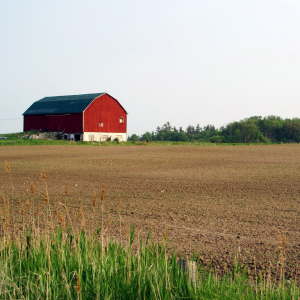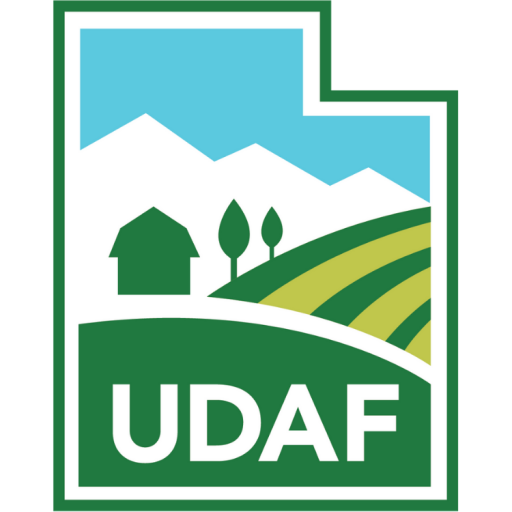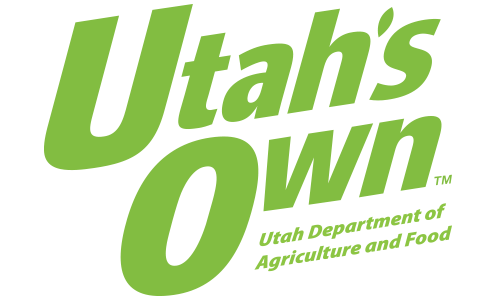Written by: Caroline Hargraves, UDAF Communication Specialist

The number one concern facing Utah agriculture is the ongoing drought emergency. Farmers and ranchers have faced significant cuts to their water supply and are experiencing severe impacts due to drought conditions. At the same time, citizens are experiencing messaging fatigue, believing that this year is much like any dry Utah year or misunderstanding the essential nature of agricultural water use.
At the Department of Agriculture, we’ve been placing an emphasis on expressing the importance of supporting our local farming and ranching communities while clearing public misperceptions.
It’s true that agriculture is a significant user of water in Utah. It’s easy to remind people that the water farmers and ranchers use provides food, dairy, meat, and fiber for us all. What many people don’t understand are the ancillary benefits of agricultural water use. Agricultural production and water use not only sustains crops and livestock, but also:
- recharges aquifers through flood irrigation, keeping water levels up in household and municipal wells
- provides base flows for many of our rivers and streams due to return flows from flood irrigation
- provides open spaces and feed for wildlife on fields and water for ducks, geese, pheasants, and other waterfowl on flood irrigated land
- creates a cooling effect for nearby communities
- maintains and keeps open many of the trails used for recreational purposes that were created for ranchers to trail livestock herds from summer to winter range
- and provides the life supporting water sources that Utah’s diverse wildlife populations depend on through stock water tanks, water troughs, and many other water projects maintained by farmers and ranchers.
Agricultural Impacts:
As water has been limited, the amount of farmland planted and the productivity of those lands has been drastically reduced; some farmers cite planting as little as 10% of their full acreage.
Because of this, combined with reduced forage on rangeland, producers are facing a severe feed shortage. Prices for what little hay is available have more than doubled and many producers have been forced to sell livestock, with some livestock auctions reporting increases of 300% or more, further clogging bottlenecks within local meat processing facilities.

Recently, we spoke with Professor Jay Olsen, Academic Dean of the Division of Business and Applied Technology and Agriculture Business Faculty of Snow College, about the economic repercussions of the drought. Professor Olsen shared that if livestock herd culls continue due to drought, approximately 16,000 mother cows may be taken out of local herds in Central Utah due to the lack of available feed leading to a potential economic loss to the region in 2022 of as much as $9.8 million dollars. An important piece of this drought puzzle is understanding that even if drought conditions resolve in the relatively near future, the economic losses and time needed to rebuild herds would bleed into the next several years. Professor Olsen added the “We need to acknowledge the multiplier effects that agricultural losses have on their local communities. When a farmer isn’t able to plant their full acreage they aren’t able to buy seed from their neighborhood co-op, or upgrade their tractors or farm machinery, or fuel — all of this money that would normally be circulating in their local economy. When the prices of food increase people change their spending habits… they’re probably not upgrading to the newest cell phones, or updating their appliances, no vacations. This has a huge impact on the rest of the economy.”
As the department works to educate the public and support producers, we’ve created several resources tailored to help consumers and producers alike navigate this extreme drought. Our Drought Resource page includes irrigation tips, rangeland management strategies, FSA and ARDL loans, as well as conservation tips for homeowners. We’ve also created a Hay Resource Bank that includes a listing of Certified Weed-Free Hay and Straw Growers and links to several hay buy/sell pages.
The extreme drought of 2021 has been unprecedented — as are the impacts felt by producers.
Much like the effects of the pandemic and following supply chain disruptions, the drought is a daily reminder how interconnected we are, our responsibilities as conscientious users of water, and our reliance on a safe, and secure local food supply. To lean on the oft-used catchphrase “now, more than ever” — now, more than ever we must find ways to support the farmers and ranchers that are the backbone of our food supply chain and local economy.





